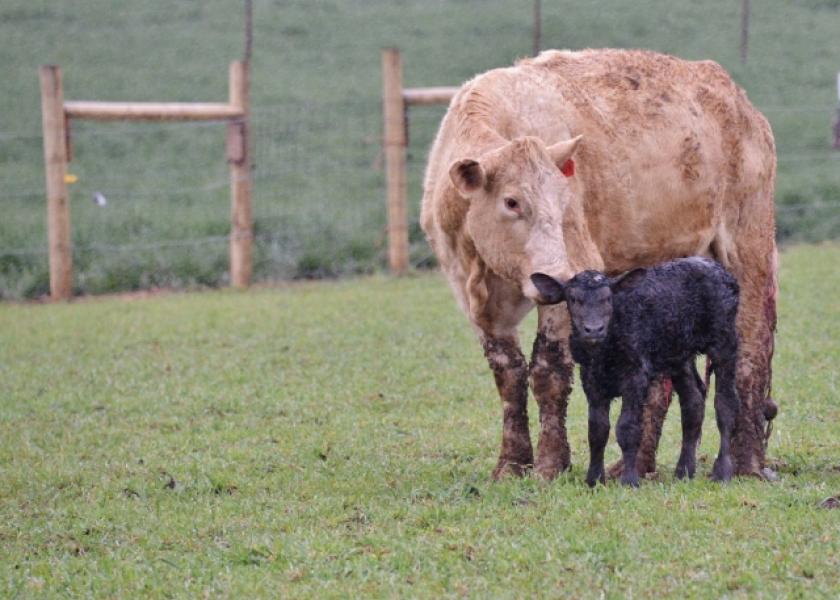Addressing Calf Scours with Pasture Management

Calf scours results in sickness, poor performance, medical expenses and death. Scours is a complex disease with many inter-related causes. Agent, host and environmental factors collectively explain scours and these factors interact dynamically over the course of time. Infected calves, typically become ill or die from diarrhea by one or two weeks of age.
Regardless of what causes the disease, the first seven to 14 days of age defines the age of susceptibility as well as the age calves are most likely to become infected and shed the agents in their manure. This is important because in many (if not most) calving systems the number of potentially infected calves may outnumber the number of susceptible calves resulting in high potential to transfer a disease causing dose of pathogens.
Although the cow herd serves as the source of calf scour pathogens from year to year, the average dose load of pathogen exposure to calves is likely to increase over time within a calving season because calves infected earlier serve as pathogen multipliers and become the primary source of exposure to younger susceptible calves.
The management plan defined as the “Sandhills Calving System” works by segregating calves by age to prevent transmission of pathogens from older to younger calves through the scheduled movement of pregnant cows to clean calving pastures which have been unoccupied by cattle for several months.
1) Initially, pregnant cows are turned out in the first calving pasture where calving season runs its course for two weeks.
2) After two weeks, cows that have not yet calved are moved to a second pasture while the pairs stay in the first calving pasture.
3) After a week of calving in pasture two, the remaining bred cows are moved to a third pasture while the calves born in pasture two remain as pairs in pasture two.
4) Each subsequent week, the remaining bred cows are moved to a new pasture and the pairs remain in their pasture of birth.
This results in pairs in multiple pastures each containing calves born within a week of each other. Cow-calf pairs from different pastures can be commingled after the youngest calf is four weeks of age at which time all calves are considered low-risk for neonatal diarrhea.
This system may take some ranch specific planning in advance, but when implemented the system continually re-creates the optimum conditions that exist at the beginning of calving season. The system uses clean calving pastures to prevent direct contact between older calves and younger calves. Accordingly, it prevents later born calves from being exposed to an accumulation of pathogens in the environment and results in less sickness, use of medications and death due to calf scours.
Reference: Basic Principles used in the “Sandhills Calving System” and How They Apply to other Production Environments. David R. Smith. Proceedings, The Range Beef Cow Symposium XX. 2007







